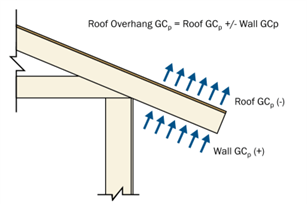The Florida Building Code (FBC) Integrated Draft 8th Edition (2023) was held on May 22, 2023. The code will go into effect on December 31, 2023, replacing all previous versions. All truss design packages sent to Alpine® Engineering after December 31st must be designed under the new FBC. An exception can be made if the construction documents were permitted under the 7th Edition of the FBC. In this case, the truss designer shall provide Alpine the date the job was permitted.
FBC 8th Edition (2023) Reference Standards
The industry has several reference standards that Alpine follows to design metal plate connected wood trusses. These design standards include:
- NDS “National Design Specification for Wood Construction”
- BCSI “Guide to Good Practice for Handling, Installing, Restraining & Bracing of Metal Plate Connected Wood Trusses”
- ANSI/TPI 1 “National Design Standard for Metal Plate Connected Wood Truss Construction”
- ASCE 7 “Minimum Design Loads and Associated Criteria for Buildings and Other Structures”
The standards and building codes that reference them are updated every three to four years. The current FBC is the 7th Edition (2020) and the reference standards for the wood truss industry is NDS 2018, ANSI/TPI 1-2014, BCSI, and ASCE 7-16. Metal plate connected wood trusses shall be run under the newly referenced ASCE 7-22.
Changes In ASCE 7-22
- Basic Wind Speed Map
In Chapter 26, the wind speed maps are still based on the type of Risk Category (I through IV). However, there are some changes to the contour lines in the Florida Panhandle down through the Big Bend regions. The changes increase the wind speed in some of the regions and decrease wind speed in others. - Wind-Borne Debris Region
In Chapter 26, glazed openings shall be protected within 1 mile of the mean high-water line where an Exposure D condition exists upwind of the water line and the basic wind speed is 130 mph or higher. - Main Wind Force Resisting System (MWFRS)
New provisions for Main Wind Force Resisting System (MWFRS) on elevated buildings are available. - Simplified Methods
New Simplified Methods in Chapters 27, 28, and 30 are deleted and no longer a requirement. - Component and Cladding
There are no changes for flat roofs. New criteria have been added for the design of net uplift pressures for roof pavers. Generally, C&C wind pressures may remain roughly the same, though they will vary depending on the roof type and wind zone (overhangs will be calculated differently and may go up or down). The log graphs have been simplified to only three zones. The wall external pressure coefficient has been revised to GCp, for h > 60 feet (C&C). Roof overhang loads shall be determined by summing roof GCp +/- wall GCp for gable and hip roofs (Figure 1).

In summary, the new FBC, 8th Edition (2023) will go into effect at the end of this year. As a result of the new ASCE 7-22 reference standard, the wood truss industry may see changes to trusses designed under the previous editions of the FBC. There will be little to no changes to materials and uplift reactions when trusses are designed with MWFRS wind pressures. C&C wind pressures will vary depending on the roof type and wind zone.
Alpine’s engineering philosophy is that trusses fall into both categories (MWFRS and C&C) and should be designed for both wind pressures. Because of the changes, IntelliVIEW® Suite users will see adjustments to truss materials, plate sizes, and uplift reactions. The magnitude of these adjustments depends on the level of optimization the trusses were designed under the current code. Alpine’s Engineering Department will continue to keep customers and the industry informed of the changes as they are made known. We will provide detailed reports on the expected changes. Contact Alpine® Engineering at structuralengineeringsupport@alpineitw.com to learn more.
References
- Florida Building Code, 8th Edition (2023)
- ASCE 7-22 Minimum Design Loads and Associated Criteria for Buildings and other Structures
Authors
Fernando Vinas | P.E., Engineering Team Lead
Douglas Fleming | P.E., Engineering Team Lead
Gewana Abdelmesih | Engineer
Abdur Khan | Engineer
John Barthle | Engineer

